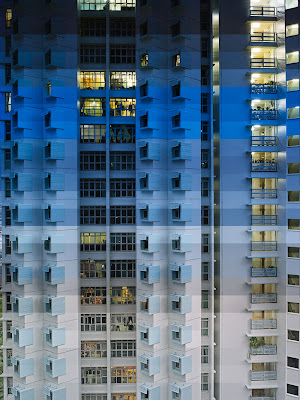The installations in this post are all made of ropes. The artist creates his installments with raw elements that can be found in our daily lives. His works are very simple but they have a meaning. The kind of art he is developing suggests an investigation on pureness and simplicity of life. His vision considers the rejection of speed, pollution, and all contemporary hurries in order to replace our attention on the purity of thought. Teo has been exhibiting his works in various galleries, walls, natural and abandoned spots all over the world.
“My shapes are reduced to the minimum, at the same time they carry some kind of an intense tension, an invisible movement; most of my patterns hide multiple visions and different perspectives. I think my art now speaks through geometry”.
Moneyless' art is characterized by an investigation on the rawest elements of life and takes for granted a process of continuous evolution. He certainly owes his graphical mark to the street, where he was born as an artist and where he grounded his roots in the '90s graffiti/writing scene.
Source: Moneyless




















